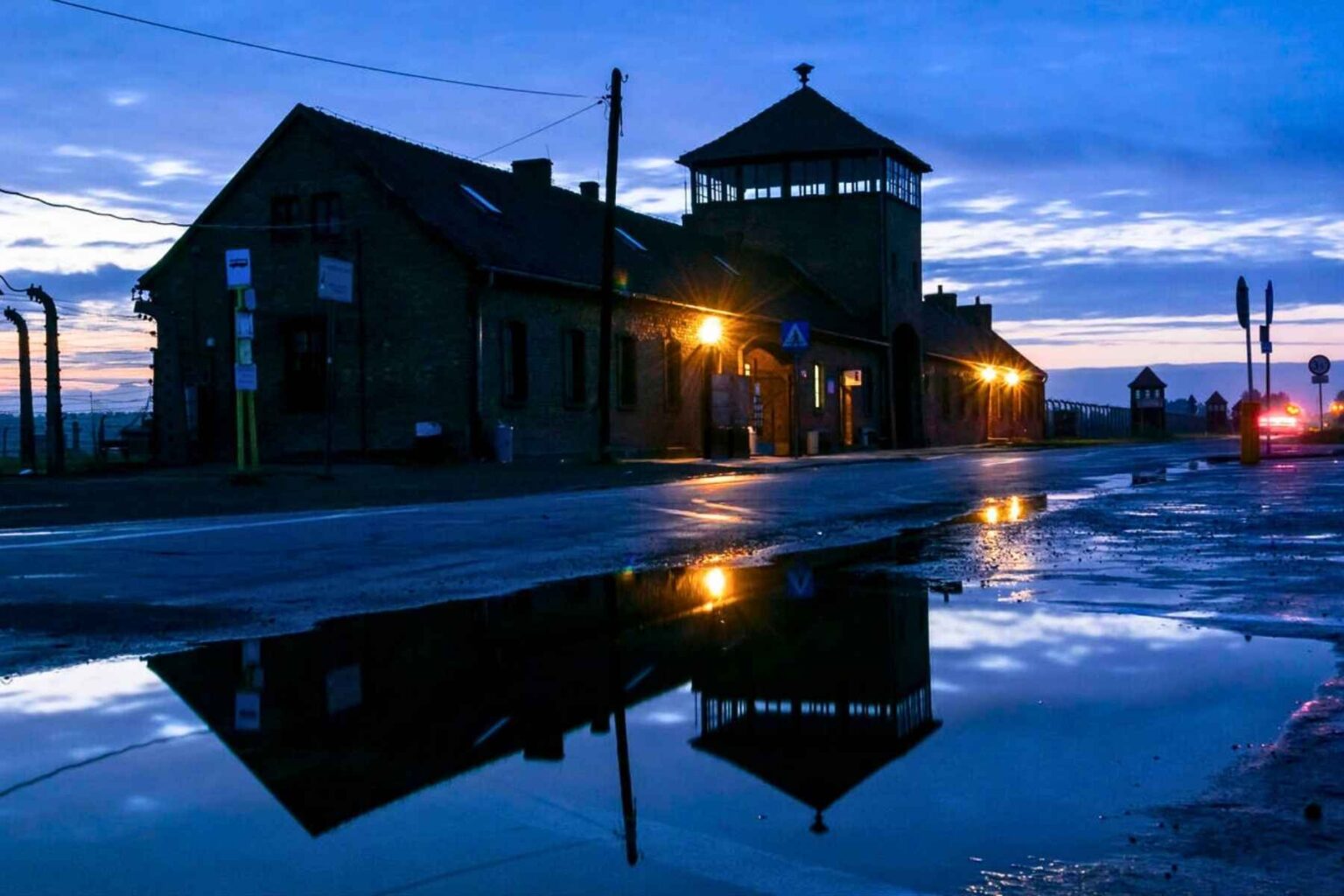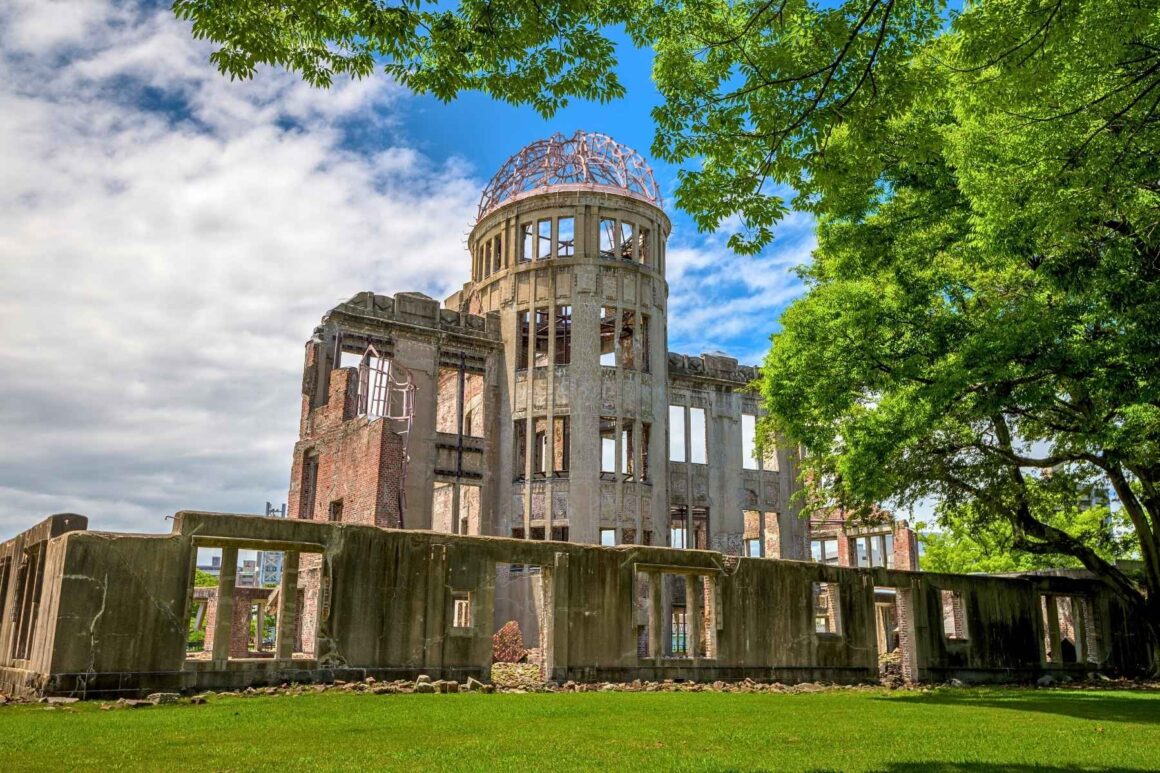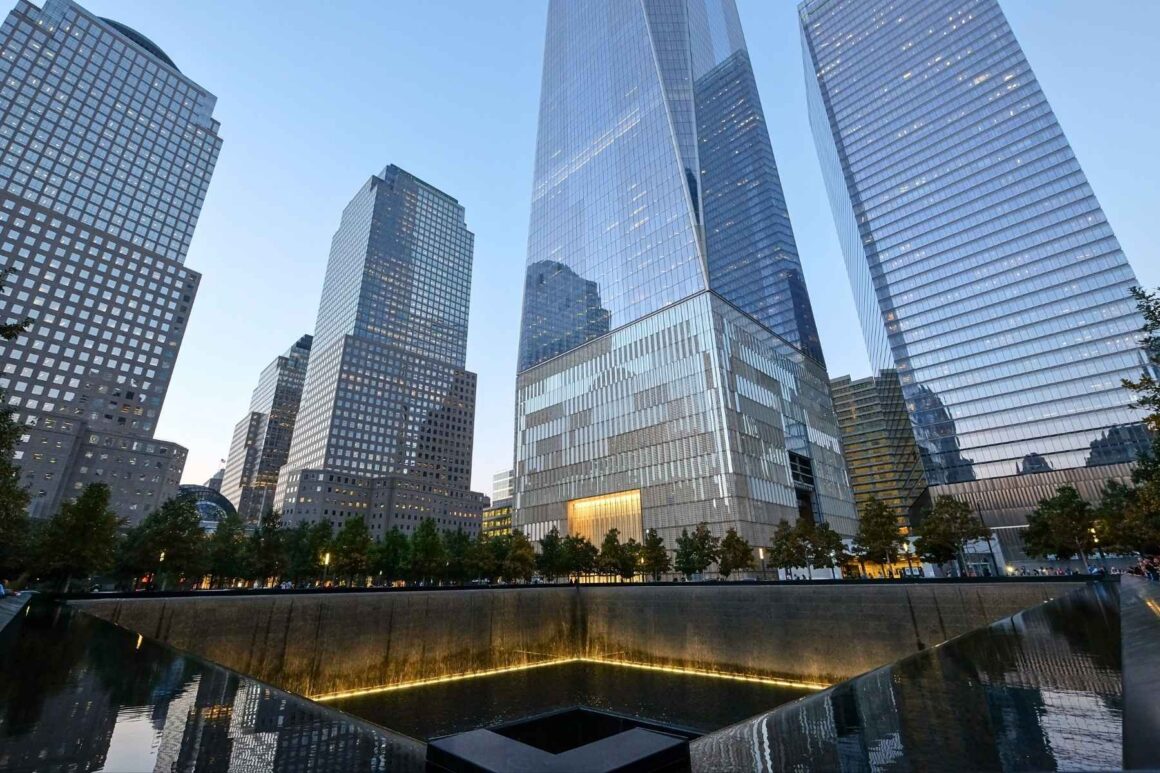At Alcatraz Federal Penitentiary, I felt the weight of history. The stories of suffering echo through these places. They turn into deep lessons that make us think about history differently.
Dark tourism sites tell stories of human strength, pain, and the need to remember our past. They take us to places where big human rights issues happened. These sites make us stop and think about humanity’s darkest times.
These places are more than just spots to visit. They are living museums that keep memories alive. They teach future generations and make sure we never forget history’s lessons.
Key Takeaways
- Dark tourism sites provide deep historical insights
- Memorial locations help preserve collective memory
- Visiting sobering destinations promotes understanding
- Historical tragedy locations teach critical lessons
- These sites encourage empathy and reflection
Auschwitz-Birkenau, Poland

Auschwitz-Birkenau is in southern Poland and is a symbol of Nazi atrocities during World War II. It is the darkest chapter of human history, where over 1.5 million people were murdered between 1940 and 1945. The complex covers about 420 acres, serving as a memorial to those who suffered.
The site shows the evidence of systematic genocide. Visitors can see preserved prisoner barracks, gas chambers, and crematoria. These structures tell the stories of human suffering and the Nazi regime’s destruction of communities.
The Auschwitz-Birkenau Memorial Museum was established in 1947 by the Polish Government. It educates millions of visitors about the Holocaust’s impact each year. UNESCO recognized it as a World Heritage List location. This ensures future generations can learn from this tragic moment.
Between 1942 and 1944, about 120,000 prisoners worked near the gas chambers. The site is the best-preserved Nazi concentration camp. It has intact structures and artifacts that document war crimes. Over one million people visit annually, making it a powerful educational landmark.
Hiroshima Peace Memorial, Japan
The Hiroshima Peace Memorial is a powerful symbol of the World War II aftermath. It’s in a city hit by the first atomic bomb. This memorial turns tragedy into a message of hope and peace.
Over one million people visit each year. They learn about the huge cost of nuclear war.
The A-Bomb Dome is a haunting reminder of the 1945 bombing. It’s preserved just as it was after the blast. Near the blast’s center, it shows resilience in the face of destruction.
The dome is a stark memorial to the over 200,000 lives lost on August 6th.
In the 120,000 square meter Peace Memorial Park, there are many monuments. The Children’s Peace Monument and the Flame of Peace remind us of humanity’s capacity for both harm and healing. The museum shows artifacts like scorched clothing and city maps, showing the bomb’s impact.
The annual Peace Memorial Ceremony is held at 8:15 am. It draws thousands who remember this moment in history. Hiroshima uses its tragic past to call for nuclear disarmament and global understanding.
Ground Zero, USA
Ground Zero in New York City is a symbol of human strength and the harm caused by the 9/11 attacks. This site, once the World Trade Center, now honors nearly 3,000 lives lost. It shows the impact of terrorism.
The National September 11 Memorial has two large reflecting pools. They are as big as an acre and mark where the Twin Towers once stood. The pools are surrounded by the names of all victims, keeping their memory alive.
The 9/11 Museum is a moving place, seven stories below ground. It has exhibits that tell the story of the attacks and their effects. Visitors can learn about this key moment in American history.
The Freedom Tower, standing at 1,776 feet, is a symbol of American freedom. The Oculus, a stunning building, is now a busy transportation hub. It welcomes about 250,000 people every day.
Ground Zero is more than a memorial. It’s a sign of hope and healing. It shows the strength of New York City and the United States after a great tragedy.
The Killing Fields, Cambodia
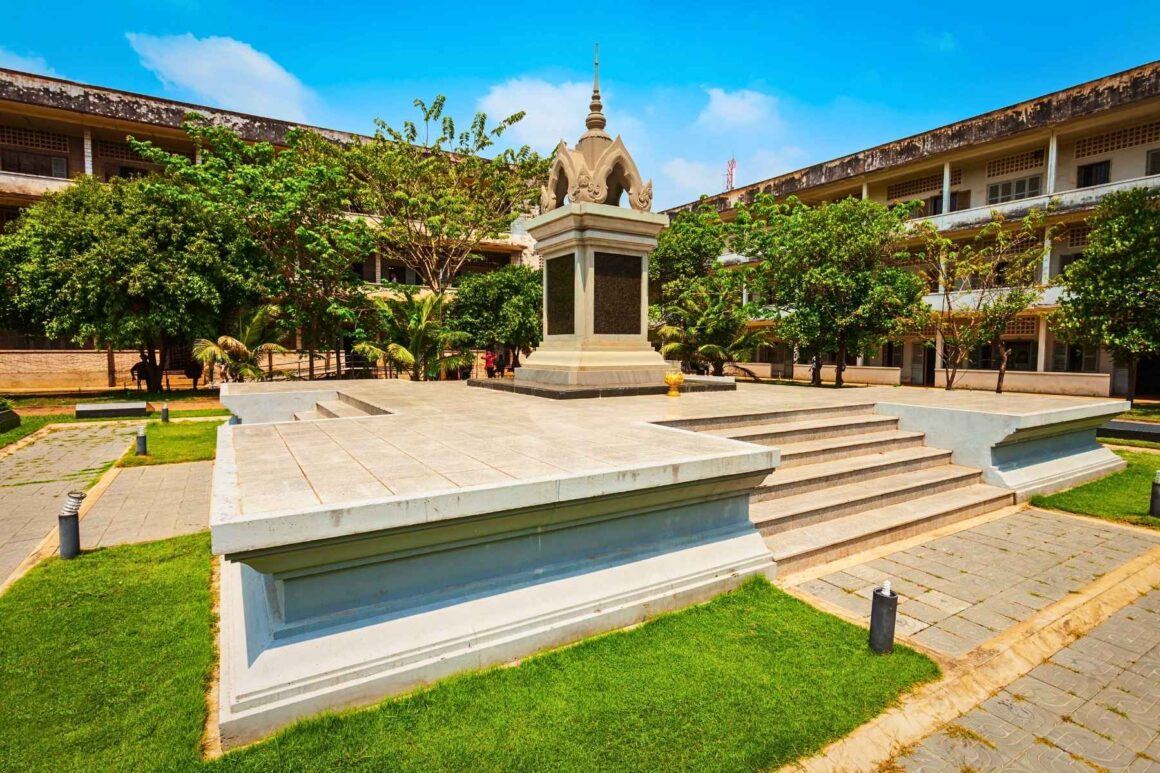
The Killing Fields near Phnom Penh are a haunting memorial. They mark one of the most devastating genocide sites in modern history. From 1975 to 1979, these fields saw unimaginable human suffering under the Khmer Rouge regime.
Choeung Ek Genocidal Center is at the heart of the Khmer Rouge atrocities. It has 129 mass graves, holding about 8,985 bodies. A memorial stupa holds over 5,000 human skulls. This site is a stark reminder of the systematic killing of nearly a quarter of Cambodia’s population.
Visitors can walk through the grounds where unimaginable cruelty happened. The Khmer Rouge targeted intellectuals, professionals, and entire families. Children were not spared, with many being indoctrinated or killed. The regime also destroyed temples and traditional ways of life.
Today, the Killing Fields are a powerful educational memorial. Every Cambodian has been touched by this genocide, either directly or through family history. The site reminds us of the atrocities committed and the importance of remembering historical trauma.
Alcatraz Island, USA
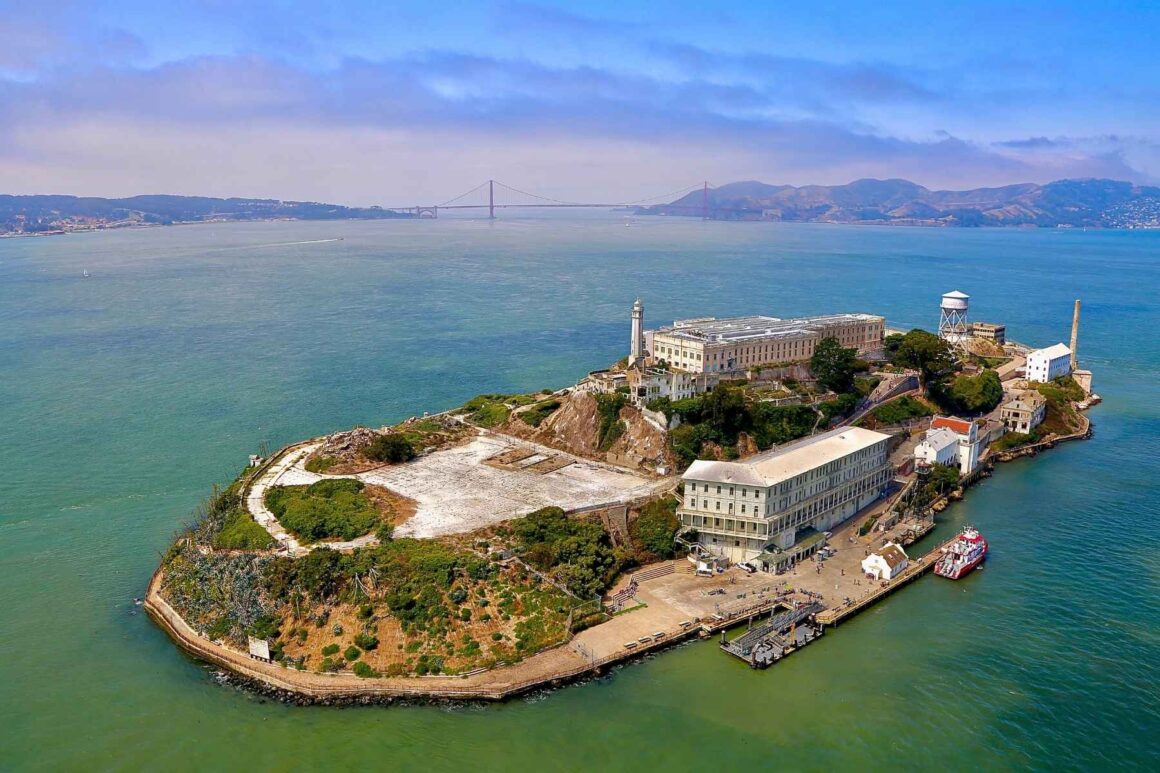
Alcatraz Island sits in the cold waters of San Francisco Bay. It’s a haunting reminder of America’s dark past. From 1934 to 1963, it was a prison for the most dangerous criminals in the U.S. It was called “The Rock” because it was thought to be escape-proof.
The prison’s fame grew from its tough reputation. Almost 40 inmates tried to escape, but none were found alive. The island’s location made escapes nearly impossible, thanks to strong currents and freezing temperatures.
Notorious figures like Al Capone were among the inmates. They faced harsh punishments, like not seeing the San Francisco skyline due to thick fog. The prison had special features, like a library with views and a cafeteria with tear gas to prevent riots.
After it closed, Alcatraz changed a lot. From 1969 to 1971, Native Americans occupied it, marking a key moment in their rights. In 1986, it became a national park, now visited by 1.5 million people each year. They come to learn about its criminal history.
Now, Alcatraz Cruises offers tours. Visitors can see the cells and feel the prison’s eerie vibe. It’s a powerful reminder of a significant part of American justice history.
Trail of Tears, USA
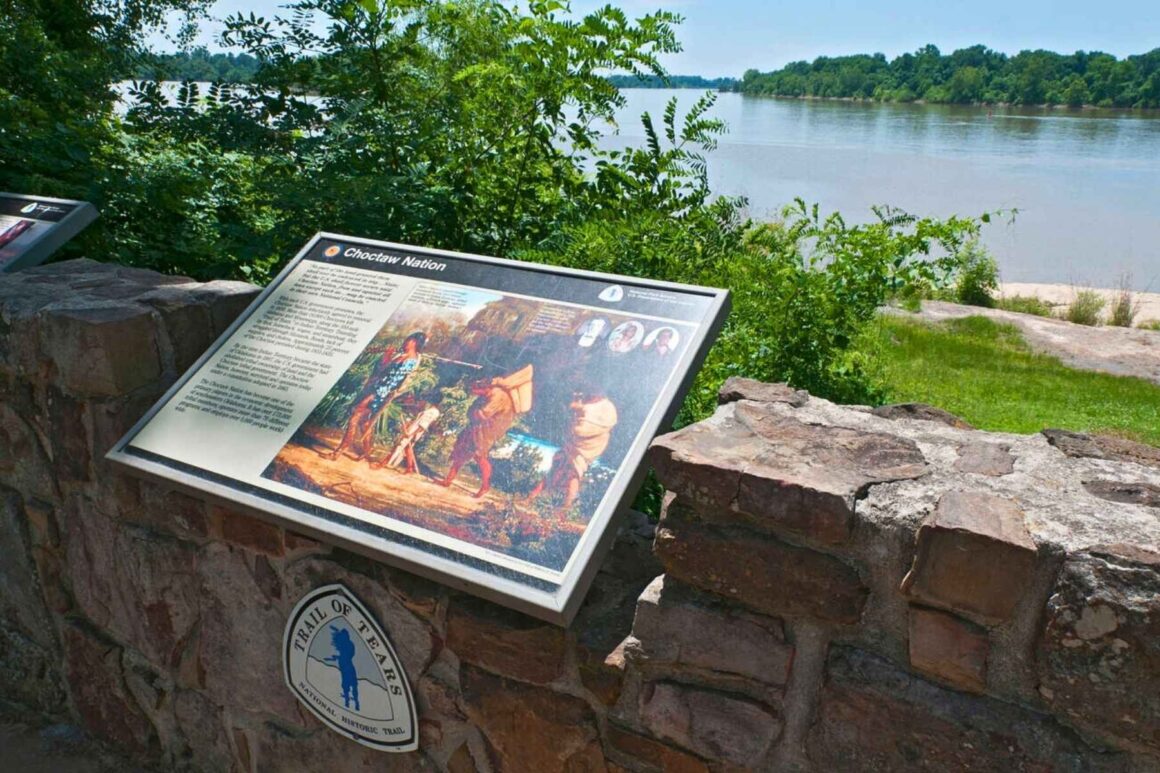
The Trail of Tears is a sad chapter in Native American history. In the 1830s, the U.S. government forced thousands of Cherokee Nation members to leave their homes. They traveled 5,043 miles, through nine states, causing great harm to their communities.
Over 100,000 indigenous people were forced to move west. The Cherokee Nation lost more than a thousand people on this journey. Many died from cold, sickness, and hunger, showing the cruelty of the government’s actions.
Today, historic sites remember this dark time. Trail of Tears State Park in Missouri is a key reminder. Red Clay State Historic Park in Tennessee covers 263 acres, where visitors can learn about the Cherokee’s fight. These places help keep the memory of a people torn from their land alive.
This journey is more than just history. It shows the destruction of Native American cultures and communities. Visitors to these sites can learn about the strength of indigenous peoples and the harm caused by government policies.
Now, the Trail of Tears National Historic Trail is a place for learning. It teaches future generations about this important moment in American history. It also shows the deep pain the Cherokee Nation suffered.
Apartheid Museum, South Africa

The Apartheid Museum in Johannesburg is a key part of South African history. It shows the dark times of racial segregation. Opened in 2001, it gives a raw look at the oppression that shaped the nation.
The museum’s design is powerful. Visitors start by going through separate doors for “white” and “non-white” people. This shows the harsh segregation of apartheid. Exhibits with photos, stories, and artifacts tell of the brave fight against racism.
Interactive displays and multimedia help visitors understand South Africa’s fight for equality. A film at the start shows the violence faced by many. It’s not just history; it’s an emotional journey that makes you think about justice and rights.
The museum is a key educational tool. It teaches about the harm of racial discrimination and the need for equality. People leave feeling they must fight against injustice in the future.
FAQ
What is dark tourism?
Dark tourism is visiting places linked to death, tragedy, or big historical traumas. These spots include concentration camps, memorial sites, and places that remember human suffering or big historical crimes.
Are these sites suitable for all ages?
These sites are deep and can be hard to see. They’re best for grown-ups, like teens and adults, who can handle the history and feelings of these places.
Why do people visit these sobering destinations?
People go to learn, remember, and understand big events. These places offer deep learning that helps avoid future tragedies by keeping history alive.
How should visitors prepare emotionally for these locations?
Learn about the site’s history before you go. Be ready for hard content and take breaks if needed. Reflecting, journaling, or talking with friends can help process your feelings.
Are guided tours available at these memorial sites?
Yes, most places offer tours led by experts. These tours share history, personal stories, and details about what happened. They’re often in many languages and help you understand more.
Is photography allowed at these memorial sites?
Rules about photos vary. Some places, like Auschwitz and the 9/11 Memorial, have specific rules. Always follow the site’s rules and respect the place’s solemnity.
How do these sites contribute to historical education?
These sites are key for learning history. They keep memories alive, honor victims, and offer experiences that books can’t. They teach about the dangers of hate, discrimination, and human rights issues.
What is the best way to approach visiting these sensitive locations?
Visit with respect, empathy, and a true wish to learn. Be reflective, listen to stories, and be open to understanding the complex history at each site.
Are these destinations safe to visit?
Yes, these sites are safe and well-managed. They focus on visitor safety and offer support for a meaningful visit.
How do these memorial sites impact local communities?
These sites are vital for local economies and help communities heal and learn. They support understanding and reconciliation by remembering historical trauma.

